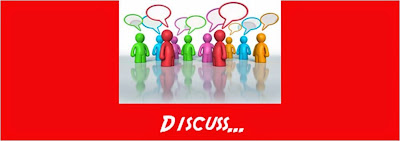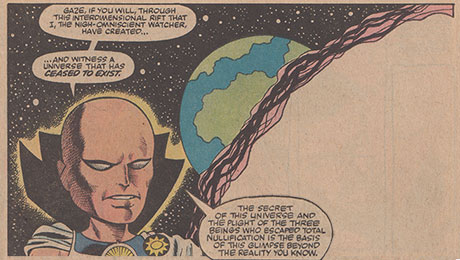Doug: Hey, welcome back, friends and fiends! Today we've got a Golden Age goodie for you, courtesy of Redartz. As we've said time and again, Karen and I are so grateful to our guest writers for bringing some content to our happy little blog that might not otherwise get the notice it deserves. While I think it's safe to say we all know of Will Eisner and of his significance in comics history, many of us may not ever have partaken of his talents. Today Redartz follows on the heels of
Edo Bosnar in exposing all of us to Eisner's work -- and this time it's his most famous creation, the Spirit!

The Spirit (Warren
Magazine) #3 (August 1974)(cover by Eisner with colors by Rich Corben)
Art and story by Will
Eisner
Redartz: Greetings
everyone! Recently, during several different conversations, several folks have
recalled Warren's Spirit magazine . It seems like a fine time to give this
deserving title some attention, so: today we will look at a book that
absolutely knocked me out when I first bought it lo, those many years ago. Upon
re-reading it for this review, for the first time in years, I found it even
better than I remembered. So, with no further delay, let's have a look.
To begin
with, this magazine was loaded with goodies. It featured 8 individual stories,
with the dates of original publication included in some cases (don't know why
this wasn't the case with all; some stories simply noted “Copyright 1974 Will
Eisner”). The stories included: “Black Alley”, “Fox at Bay”, “Surgery”, “Foul
Play”, “Paraffin”, “The Embezzler”, “The Last Hand” and “Lonesome Cool”. All
the stories are presented in beautiful black-and-white with gray wash, except
for “Paraffin”; which was reprinted in full color. This was the standard for
this magazine: mostly b/w with a color story each issue . Additionally, there
was a two-page letter column and a one-page feature: “Will Eisner Interviews
the Spirit” (more about which will follow shortly). All the stories in this
magazine are enjoyable; but in the interests of brevity we will look at one:
“Fox at Bay” (by the way, my apologies for the scans; the gray tone seemed to
create patterns upon scanning which were frustratingly resistant to
correction).
At this
point, I would note that much and more has been written about Will Eisner; and
by folks far better qualified than I. However, I must note a few observations
about Eisner's work in general:
First, his artwork is peerless. Eisner's drawings read like
stills from a classic film. His use of shadows, his dramatic composition and unusual
perspectives literally pull you from panel to panel. His pen linework is
stunning, and he virtually defines expressive characterization. Each face, each
figure just bleeds emotion. Then there is his lettering, and his famous
penchant for incorporating the logo in so many different ways into the splash
pages of his stories. It is with good reason that Will Eisner is considered a
giant in the history of comic art.
Second, his writing cannot be underestimated. As noted above,
each story here was powerful, Eisner blends
high drama, comedy, and an almost EC-ish (does that sound right?) bit of
horror. Some stories are light hearted
and gentle; some quite humorous, some stories can be quite violent; Denny Colt
( our hero, the Spirit) seems to be constantly getting his head bashed in. Our
chosen story falls into the latter category.

“Fox at Bay”
opens with one of those logo plays for
which Eisner is known. We follow the Spirit past watchful police, past a trail
of sprawled bodies on the ground, The text tells us that the Fox, Reynard, has
already left numerous victims and awaits in his lofty hideaway. The Spirit
enters a phone booth and proceeds to dial (yes, this certainly sets our
timeframe) Reynard's number. We see Reynard himself busy ignoring the ringing
phone as he types away at his typewriter (another remnant of yesteryear). It
seems Reynard, portrayed through his dialogue as a man of some intelligence, is
performing an experiment of sorts: having established himself as a multiple
killer, he wants to gauge his reactions (as a perfectly sane man- his words,
not mine) to being pursued and cornered by the law. Upon reading this, I found
him eerily relevant today, considering the heartbreaking deeds committed by
some elements in the news recently.

At this
point, Commissioner Dolan (the Spirit's friend and foil on the Central City
Police ) calls up to Reynard to surrender. Reynard answers with a burst from
his machine gun, then answers the phone. He requests the Spirit stop calling,
as he is becoming a distraction from the experiment. Reynard then inventories
his supplies, while below Commissioner Dolan is ready to fire the tear gas. The
Spirit convinces Dolan to give him a count of 200 to stop the Fox on his own,
and so the countdown begins.

Eisner
builds the suspense as he switches the viewpoint back and forth between the
Spirit (working his way to the skylight above the Fox) and Dolan; both keeping
up the count. We get a peek into Reynard's head as we see his typed page,
describing slight regret for the families of his victims (but not much, they
were all part of the experiment, after all). Reynard notes that the police have
been quiet, and decides to draw their fire by shooting off a few rounds. This
results an officer being hit, and said officer's distraught comrade shoots
back. Unfortunately, his shots hit the Spirit (still lurking above the
skylight) . The panel showing the Spirit's pain as the bullets hit his legs is
almost excruciating in itself. He then falls through the skylight and ends up
on the floor, right in front of the Fox!

Below, Dolan
and his officers see no option as yet other than to keep up the count.
Upstairs, the Fox considers the Spirit to be helpless with his leg wounds, and
offers to let the Spirit 'sit back and watch'. The Spirit is having none of
that, however. He tries to convince Reynard of the futility of his situation,
while struggling to gain his feet. Reynard's reply is a swift whack to the head
with the butt of his rifle. Two panels later the Spirit has gotten hold of
Reynard's typewriter and hurls it at his captor, all the while keeping the
count in his head ( can this guy take a beating, or what!?).
Having lost
his typewriter, Reynard decides to make his final journal entries by hand, and
then to kill both the Spirit and himself. However, our relentless hero has
dragged himself across the floor and secreted himself behind Reynard's chair,
which he then upends; spilling the Fox to the floor (just as the count reaches
200, of course). Thinking he has the situation settled, the Spirit tries in
vain to reach Dolan by phone to prevent a rush of police fire. As he begs for
an answer to his call, the still-treacherous Fox has regained his feet, and his
weapon. Just as Reynard raises his rifle to bludgeon the oblivious Spirit, a rain of bullets from the broken skylight
ends the Fox's threat once and for all. Dolan has arrived, and helps the
wounded Spirit from the Fox's lair. The final panel shows them passing beside
the same “Spirit” logo that was used in the initial page, as the phone in the
booth keeps ringing, ringing...

After
finishing this story, I was struck by the level of intensity , and by the
Spirit's ability to take a licking (and a few bullets, a head clubbing, etc).
Denny Colt reminds me of Batman in this regard, as he lacks superpowers or
invulnerability. Actually, the Spirit doesn't even have Batman's level of
training or weaponry. Denny Colt is just a guy, a very resilient, tough guy who
keeps on smiling despite his current circumstance. Incidentally, there was a
wonderful one-shot several years ago published by DC, featuring these two :
Batman/the Spirit. Presented by Jeph Loeb and Darwyn Cooke, this book offers
loads of good reading, and a fun tour through both heroes' rogues galleries.
All through this
story, Eisner's artistic skills are evidenced. For example, the second story
page; note the dramatic lighting on the wall both highlighting the bullet holes
and obscuring the police officer's face. Note any of the faces in the story,
where with even but a few lines Eisner captures the character's emotions
effectively. Then there is the beautiful composition displayed in the 6th.
Panes of page 18: the Spirit is framed visually by the shards of the broken
skylight through which he just fell. Almost lost the edge is the thin face of
the Fox, also framed but obscured by the intact glass. If one is inclined to
choose a comic to leaf through just to admire the drawing, an Eisner book is a
perfect choice.
Finally,
there is the Eisner/Spirit interview. The author questions his creation about
crimefighting, his relevance to contemporary society, and his attitudes about
women (even going so far as to bait the Spirit about the possibility of having
him married). The entire interview is handled with cleverness and humor, and is
accompanied by small face shots of the two speakers. Eisner casts his keen eye
upon himself here, and the results are both thought-and smile-provoking.

These Warren
editions of the Spirit were a great introduction to Will Eisner's work. The
larger size allowed the artwork to be more easily admired, and the color
sections with their higher quality stock were a big plus. Collecting this
series led me to explore some of Eisner's other work; including his graphic
novel “A Contract With God”. I even found one of his issues of P.M.; a
maintenance periodical he did for the army (featuring a lot of his Eisner wit,
among the drawings). I also was led to hold a great respect for a man who
remains, always, a comics legend.










































































